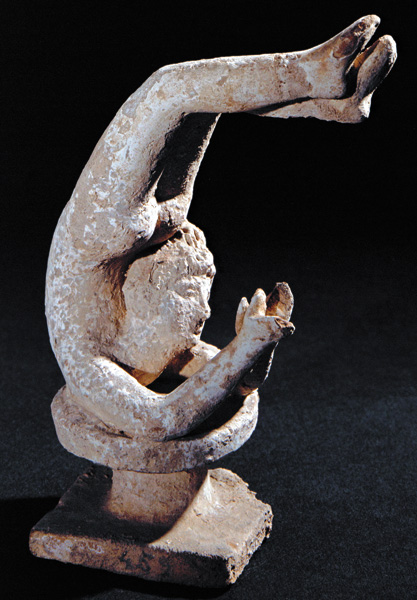
This fourth-century B.C. terra-cotta figurine discovered in Greece and measuring only 6 inches tall depicts the contorted body of a nude female acrobat as she sails through the air in a somersault. Despite the amazing strength required to hurl her small frame through the air, the acrobat seems to handle the vault with ease. Indeed, she appears perfectly calm as her back and legs arch gracefully into the apex of the vault.
In ancient Greece, as today, acrobats and tumblers were considered not so much athletes as entertainers. Often accompanied by singers and dancers, they performed their death-defying leaps and impressive feats of strength in front of enthralled crowds at weddings, banquets and even funerals. Often, the performances were preceded by ritual sacrifices to local gods.
Such ritual acrobatics may hearken back to Minoan practices known from Bronze Age Greece. At the palace of Knossos on Crete, several frescoes were found that depict acrobats vaulting over the backs of charging bulls, imagery that is repeatedly found in Aegean art of the period. It is often presumed that such scenes had religious or ritual significance.
Already a library member? Log in here.
Institution user? Log in with your IP address.

